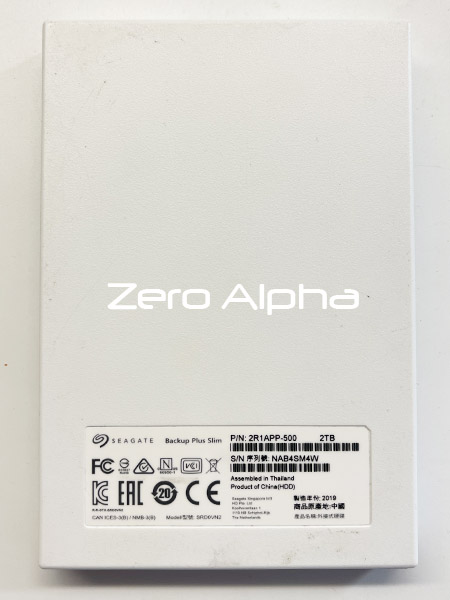Seagate Backup Plus Slim Data Recovery
Seagate Backup Plus Slim data recovery service by Zero Alpha. Many users may encounter various problems that necessitate data recovery. Here are some common issues:

1. Physical Damage
Physical damage is one of the most severe problems affecting Seagate Backup Plus Slim drives. Drops, impacts, and exposure to liquids can lead to internal mechanical failures. Symptoms include unusual noises (clicking or grinding), the drive not being recognized by the computer, or intermittent connectivity. Physical damage often requires professional intervention for data recovery, as opening the drive in a non-controlled environment can lead to further data loss.
2. Firmware Corruption
Firmware is essential for the drive's operation, acting as an intermediary between the hardware and the computer. Corruption in the firmware can render the drive inaccessible. Users may experience symptoms like the drive not spinning up, being detected with a 0-byte capacity, or not being recognized at all. Firmware corruption often requires specialized tools and expertise to resolve.
3. Logical Failures
Logical failures occur due to corruption in the file system or partition table. Common causes include improper ejection of the drive, power failures during data transfer, or software issues. Symptoms can include missing files, the drive appearing as RAW (unformatted), or error messages prompting formatting. While some logical failures can be addressed with software recovery tools, others may require professional data recovery services.
4. Bad Sectors
Bad sectors on the drive's platters can lead to data corruption and loss. Over time, sectors can become unreadable due to wear and tear, manufacturing defects, or physical impacts. Symptoms of bad sectors include slow read/write speeds, frequent freezing during file transfers, or the drive becoming unresponsive. Data recovery from drives with bad sectors can be complex, often requiring specialized hardware imaging tools to salvage readable data.
5. Power Issues
Power surges, outages, or using the wrong power adapter can damage the drive's internal components, such as the PCB (Printed Circuit Board). Symptoms include the drive not powering on, intermittent connectivity, or the drive becoming hot to the touch. Power-related issues can sometimes be resolved by replacing the PCB, but this often requires technical expertise to ensure compatibility and proper functionality.
6. Software Conflicts
Conflicts with other software on the user's computer can lead to the drive being unrecognized or causing errors during data transfers. Antivirus programs, outdated drivers, or incompatible backup software can create problems. Symptoms include error messages, the drive disconnecting during use, or failure to back up files properly. Resolving software conflicts typically involves updating or reconfiguring the conflicting software.
7. User Error
Accidental deletion of files, formatting the drive, or improperly ejecting the drive can lead to data loss. User errors are common and can often be mitigated with careful use and regular backups. However, once data is lost due to user error, recovery can be challenging without professional tools and expertise.
Seagate Backup Plus Slim 2TB 2R1APP-500 Data Recovery Case Log
30Jul24: This hard drive has 5.9k current pending sectors listed. Inside is an ST2000LM007.